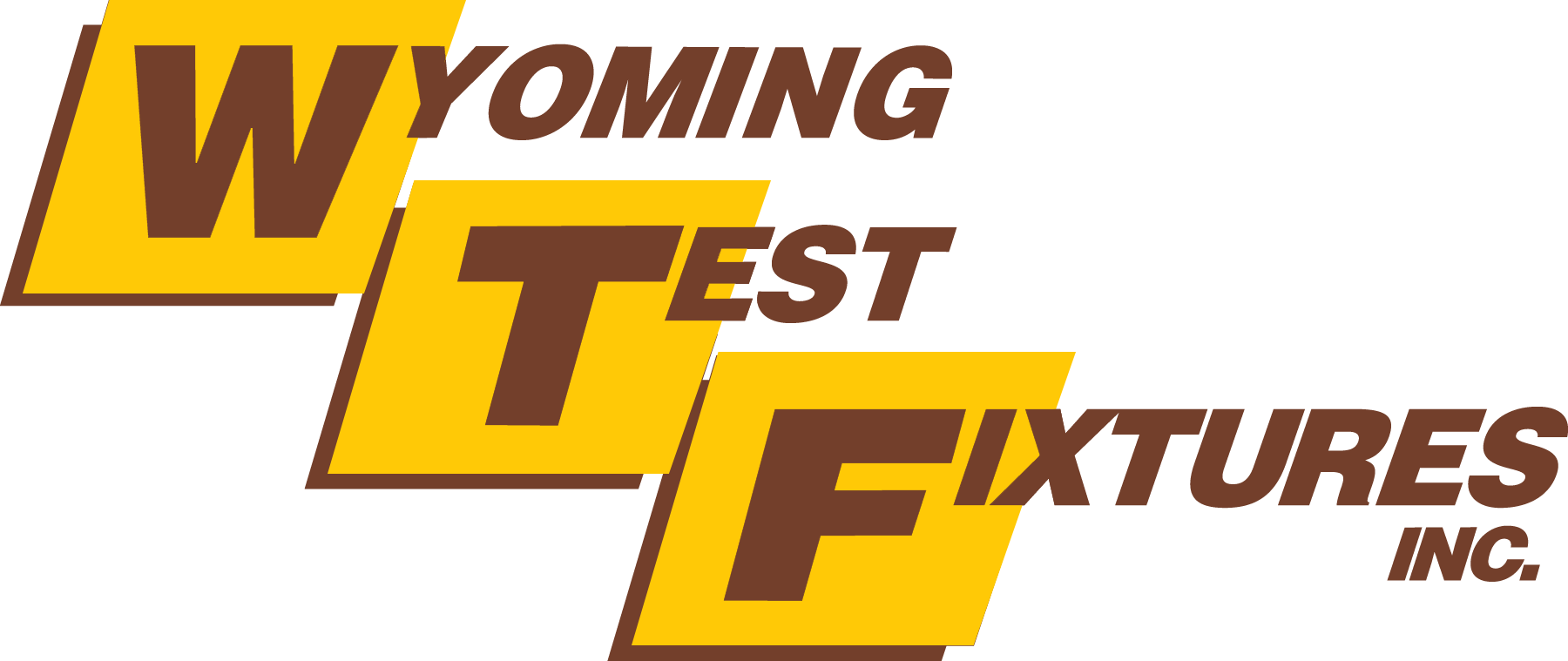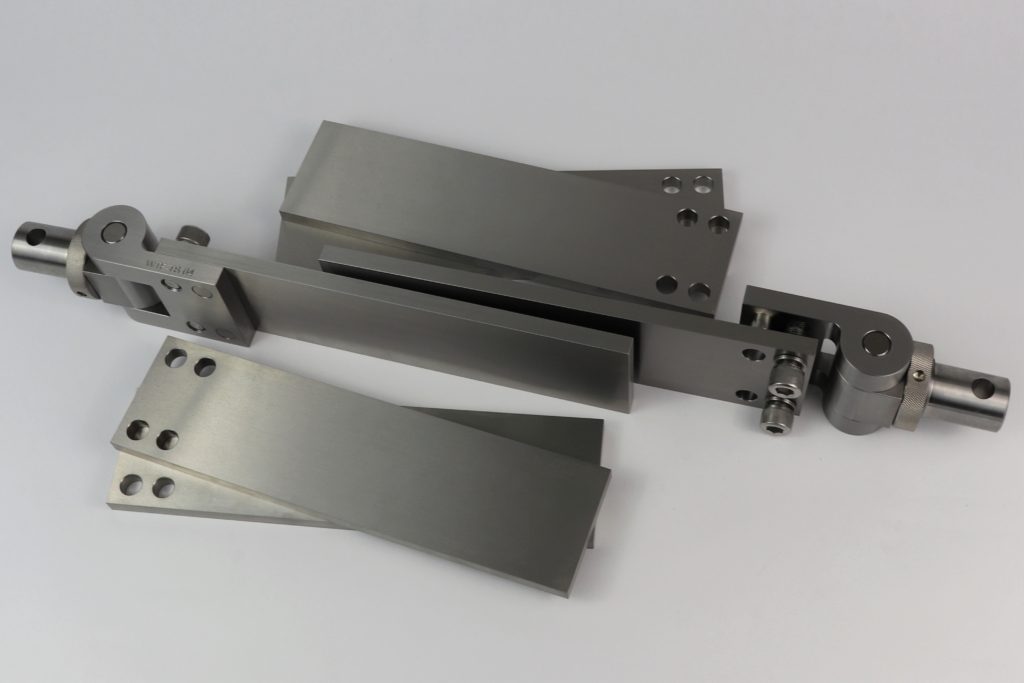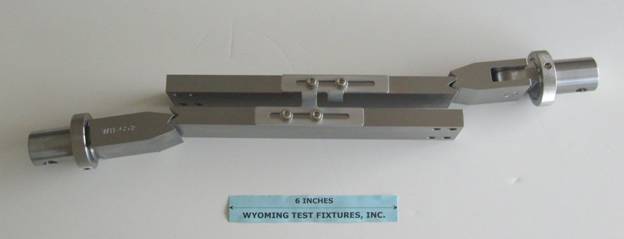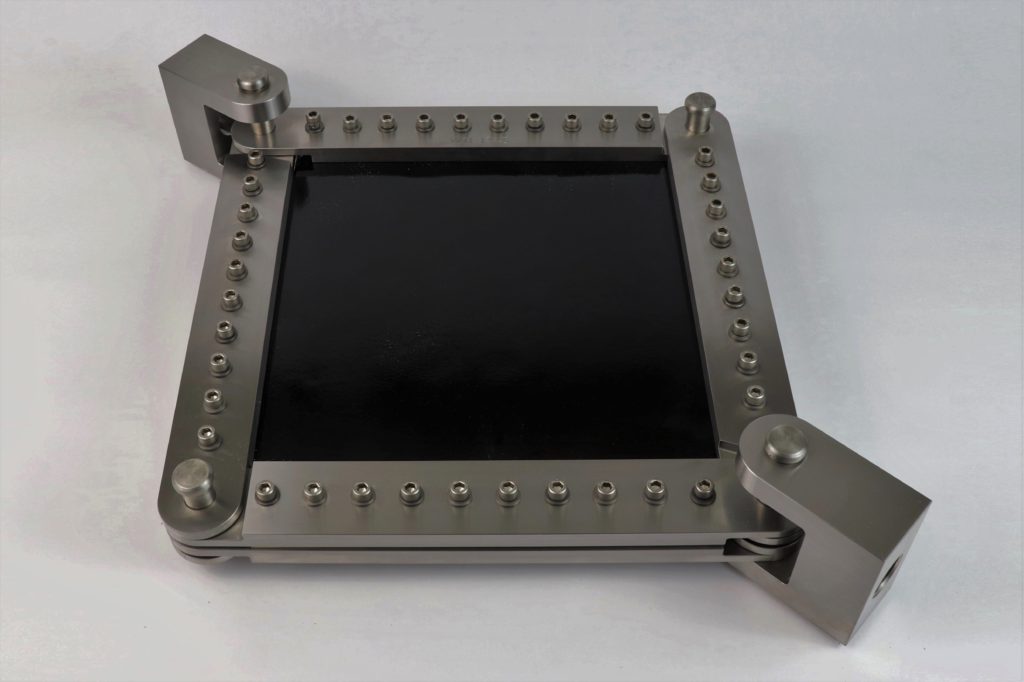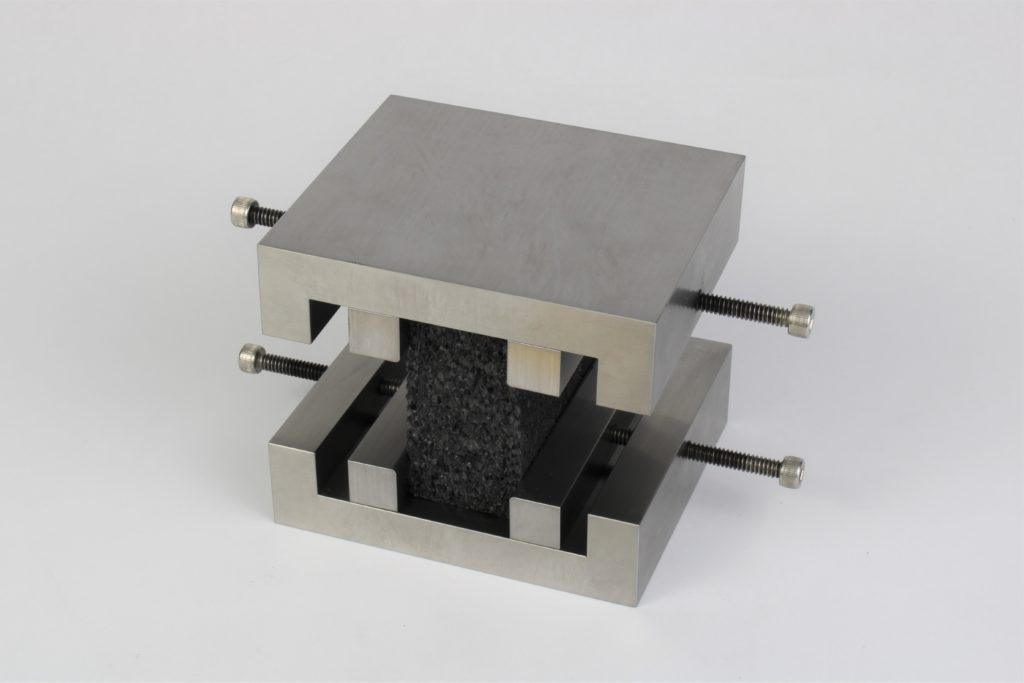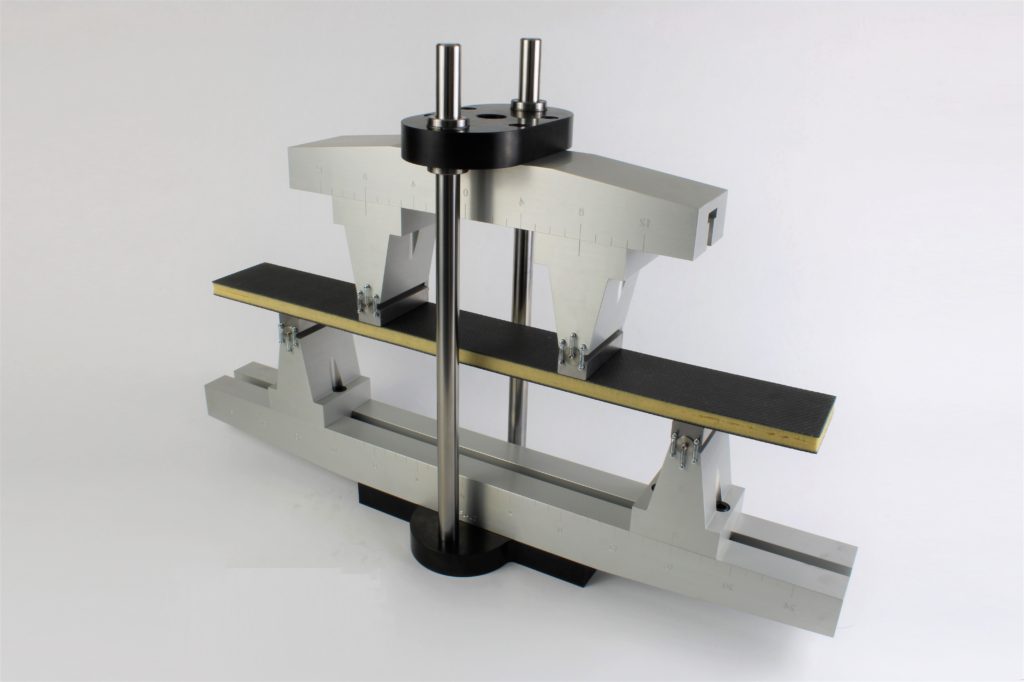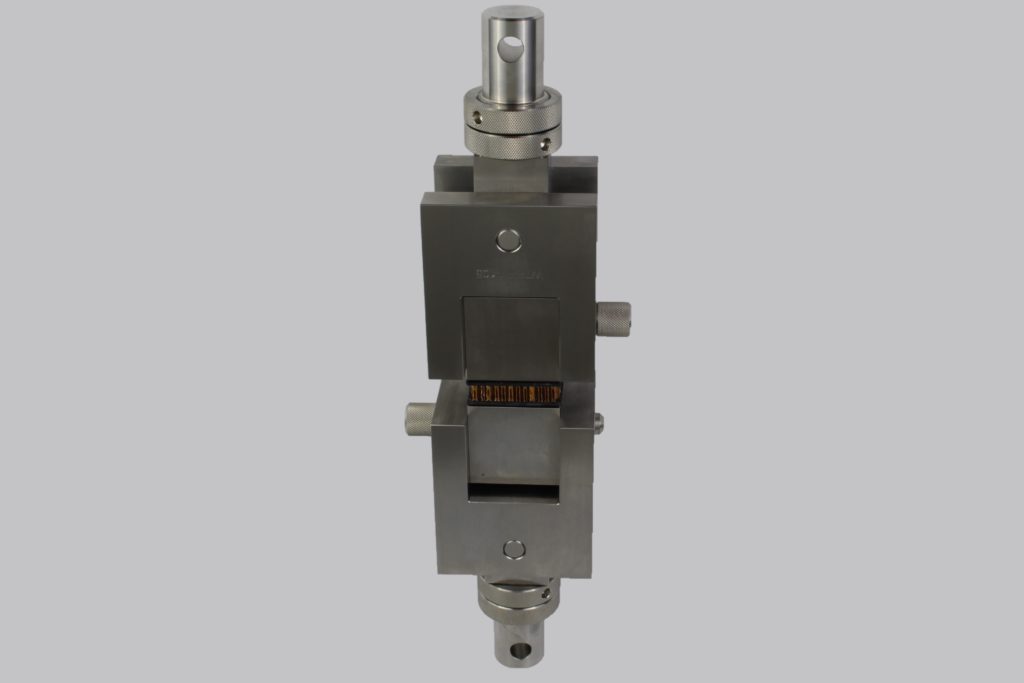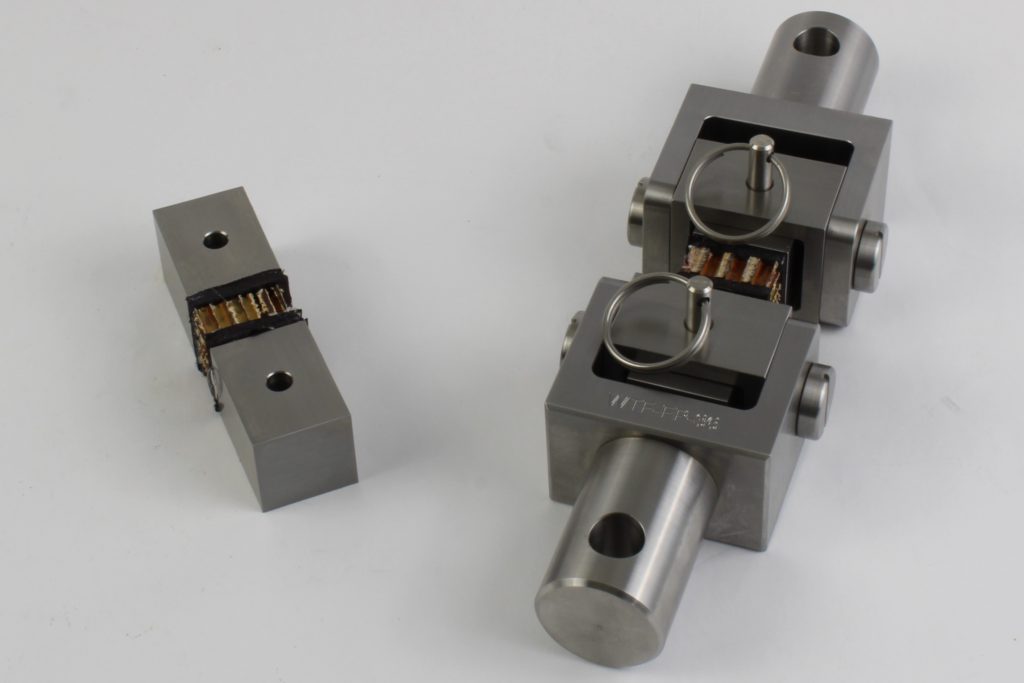Sandwich Panel Testing
A variety of standardized test methods exist to evaluate the mechanical performance of composite sandwich panels. Test fixtures used for performing the most common test methods are listed below.
Either a sandwich panel or the core material itself can be tested, in shear parallel to the flatwise plane. A unique feature of the Wyoming Test Fixtures, Inc. design is that the same fixture can be used to apply either a tensile or a compressive loading, although a tensile loading is most commonly utilized.
This fixture performs the same functions as Model WTF-TS while incorporating the separate tension and compression loading mode configurations indicated in ASTM Standard C273. Bonding plates for both this fixture and WTF-TS are designed so that, whether used in the tension or the compression loading mode, both surfaces can be used. This doubles the life of the bonding plates.
A-9: Picture Frame Shear Test Fixture
ASTM D8067
The Picture Frame Shear Test Fixture in its various forms has been around for many years. It was originally developed as an in-plane shear test method for solid laminated materials such as plywood and composite laminates. More recently, it has increasingly been also used for in-plane testing of sandwich panels of all types.
The sandwich panel is lightly clamped into the test fixture at both ends and subjected to a compressive force parallel to the plane of the panel. As the name suggests, force is introduced primarily at the ends of the face sheets.
D-2: Long Beam Flexure Test Fixture
ASTM C393 & D7264
Similar to the standard flexure fixture, the Long Beam Flexture Test Fixture is capable of both three- and four-point loading but with a maximum span of 24 in. Either pivoting flats or hardened cylinders can be used as load and support points. Another option is the addition of alignment rods and linear bearings to the standard fixture which maintain alignment of fixture halves independent of the testing machine alignment.
This test method performs a through-the-thickness tensile test of a sandwich panel. The strength of the core, a face sheet, or the core-facesheet bond, whichever is weaker, is determined. All four faces of the bonding block can be used.
This test method complies to the same standard as the 2 in. Flatwise Tensile fixture but uses smaller bonding blocks and specimens. Both fixtures can use cylindrical bonding blocks.
